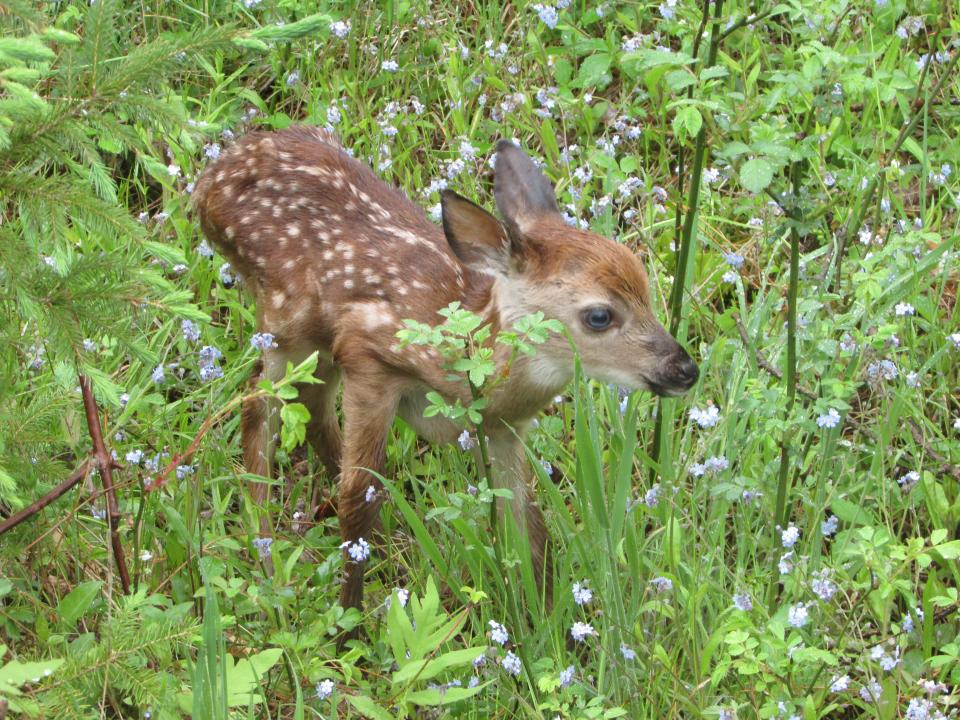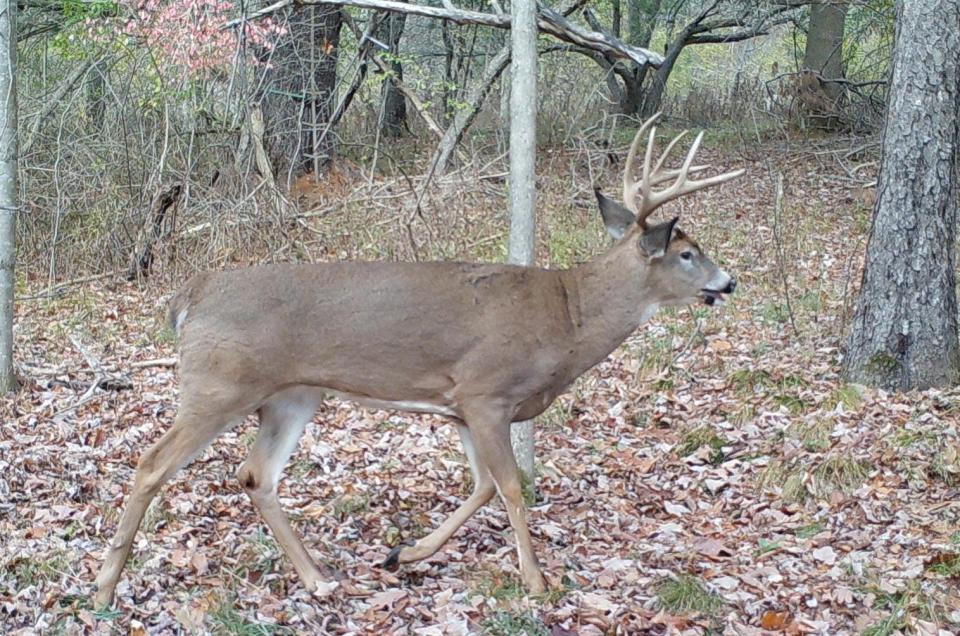Whitetail rut prediction for 2024: What to expect while deer hunting this fall
Last mid-May I pulled off the blacktop, up a dirt road.
Whoa! Brake!
There, blocking my way, were two spindly-legged newborn fawns.
Their mother stood off to the side in the tall grass and brush, like a statue.
“Great chance to get some photos,” I thought.
After carefully shutting the truck door, I walked toward them.
But instead of running away, they both started walking towards me.
I snapped a couple photos with my phone of one, and then felt the other fawn’s nose nuzzle my leg.
“Oh no! It’s imprinting,” I thought, alarmed.
I immediately ran back to my truck, not wanting them to imprint, or get used to, my scent.
It would be their death sentence.
These fawns would have been conceived around Halloween, as one of the constants when we are talking about the rut. The whitetail’s gestation period is always around 200 days, give or take. That’s a fact.
We know now that all deer do not breed at the same time.
The Rut comes and goes, has peaks and valleys, depending on a number of factors, including the phases of the moon.

Using the phases of the moon to predict the rut
The moon repeats itself, unfolding its phases exactly the same every 19 years, called the Metonic cycle.
And on those years, the whitetail rut rolls out in a similar way as 19 years prior and not like the previous year.
Nothing in nature happens at exactly the same time every year, especially the whitetail rut.
The rut, or what was called the Running Time of the Whitetail, varies by up to three weeks, according to my Excel spreadsheet of past ruts that I have been adding to for half a century, populating from data collected for 50 years.
I killed my first rutting whitetail buck in 1971.
Like most deer hunters, I used to think that the rut always happened on such-and-such a date because I experienced it.
But then the next year … all quiet.
What?
What happened?
Having written about the whitetail rut for many years, chronicling its high points and quiet times, a correlation with the phases of the moon began to appear.

So this year, the whitetail rut of 2024 should unfold as it did in 2005, 1986 and 1967, the 19-year increments.
Whitetails, and actually other “short-day breeders” like sheep and other Ungulates, have evolved an amazing clockwork to assist them in timing their fawn drop.
Fawns, especially in the Northern latitudes, need to hit the ground at the most opportune time.
Too early, say in April in our neck-of-the-woods, could be catastrophic.
A cold spring with snow and freezing temperatures could doom newborn fawns. And too late, say mid-summer, would not allow them to reach sufficient age or size to make it through a tough winter with deep snow.
Ambient autumnal temperatures are not reliable. Some autumns are milder and others colder.
So how could deer time their rut, or breeding time, so that their fawns, 200 days hence, would land in the sweet spot of May?
Light is the answer.
2024 rut prediction: A bifurcated rut
Whitetails, among many other animals, have evolved a gland in their brain, hot-wired to the optic nerve that produces a hormone called melatonin in the Pineal gland.
Sheep farmers use melatonin inserts to time their ewe’s lambing.
As daylight shortens in the fall, especially past the Autumn Equinox when nights become longer than days, hormones and pheromones, the natural biochemical engines in deer, shift.
This year we should see a two-pronged or bifurcated rut. It will be quite different than last year, or even the year before in 2022.
Last season we experienced a very early rut in late October, spilling into early November, a good solid rut, though early.
More: Shed antlers are a rare winter prize. Why they are so tough to find, and what they tell us
The year prior, the fawns I referenced in the road at the beginning of this piece were conceived in the 2022 rut wheelhouse, around Halloween.
Things will be different again this upcoming season.
Back in 2005, 19 years ago we experienced two rut peaks, one in late October, and the other around Thanksgiving.
History should repeat again … and I was lucky that year, wrapping up the regular NYS firearm season with a rutting 8-pointer during a Thanksgiving snowstorm.
Having two rut highpoints, where about 50% of the doe cycle during the New York State archery season in late October, just past the Full moon, followed by the others coming in around Thanksgiving this year, allows deer hunters participating in the Regular Firearms season to experience a rut peak too.
-- Oak Duke writes a weekly column.
This article originally appeared on The Evening Tribune: 2024 whitetail rut prediction: What to expect deer hunting this fall

